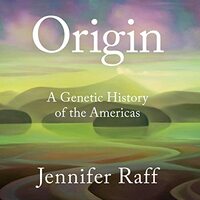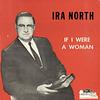Take a photo of a barcode or cover
challenging
informative
inspiring
medium-paced
This book was absolutely fantastic! We have many misunderstandings and unknown facts about how first peoples got to the Americas. Raff mixes genetics, history, and some archaeology to look at new data and consider some strong alternatives. A wonderful aspect of this book is Raff’s respect and inclusivity with current native tribes to conduct research. Highly accessible and extremely important, this is a brilliant book!
informative
slow-paced
I really enjoyed most of the content of the book, and found it interesting. I found there was too much explanation of the methods of the science, but that is personal opinion and not the reason for my rating.
I found the writing frustrating. There were too many references to what had already been covered or would be covered. I also found some of the sentences confusing, as what the sentence meant wasn’t exactly what was written. There was inconsistency in translation also - sometimes non-English words were explained in a footnote, other times I needed to look them up.
I found the writing frustrating. There were too many references to what had already been covered or would be covered. I also found some of the sentences confusing, as what the sentence meant wasn’t exactly what was written. There was inconsistency in translation also - sometimes non-English words were explained in a footnote, other times I needed to look them up.
informative
inspiring
reflective
fast-paced
challenging
informative
medium-paced
Conventional wisdom says the first humans to enter the Americas were the Clovis people, crossing the Beringia corridor 13,000-14,000 years ago. Yet tantalizing archeological evidence suggests the first migration may have been earlier, via a water route along the coast about 20,000 years ago, while ice sheets prevented an incursion over land. Since the land that made up the coast at the time is now under water, finding indisputable proof is difficult.
That's where genetics comes in. In this fascinating and accessible book, anthropological geneticist and science communicator Jennifer Raff provides proof through genetics that eludes archeologists. She also explores how Native Americans have defined their own origins, and how a long history of exploitation and distrust impedes scientific research. Ultimately, the message is one of hope and discovery.
Written for a lay audience, this book covers the subject extensively, from a variety of perspectives, in a way that's clear, sensitive, and understandable. Highly recommended for anyone with an interest in the subject.
Thanks, NetGalley, for the ARC I received. This is my honest and voluntary review.
That's where genetics comes in. In this fascinating and accessible book, anthropological geneticist and science communicator Jennifer Raff provides proof through genetics that eludes archeologists. She also explores how Native Americans have defined their own origins, and how a long history of exploitation and distrust impedes scientific research. Ultimately, the message is one of hope and discovery.
Written for a lay audience, this book covers the subject extensively, from a variety of perspectives, in a way that's clear, sensitive, and understandable. Highly recommended for anyone with an interest in the subject.
Thanks, NetGalley, for the ARC I received. This is my honest and voluntary review.
hopeful
informative
reflective
medium-paced
challenging
informative
medium-paced
Some interesting content buried inside some turgid prose. I respect her passion, just not her writing.
I wanted to like this book better, but ultimately the poor summary figures (migration directions and phylogenetic trees) stopped me. If they had been printed larger and darker (faded look in my copy of the book), I would have given this book 4 stars. Alas.




